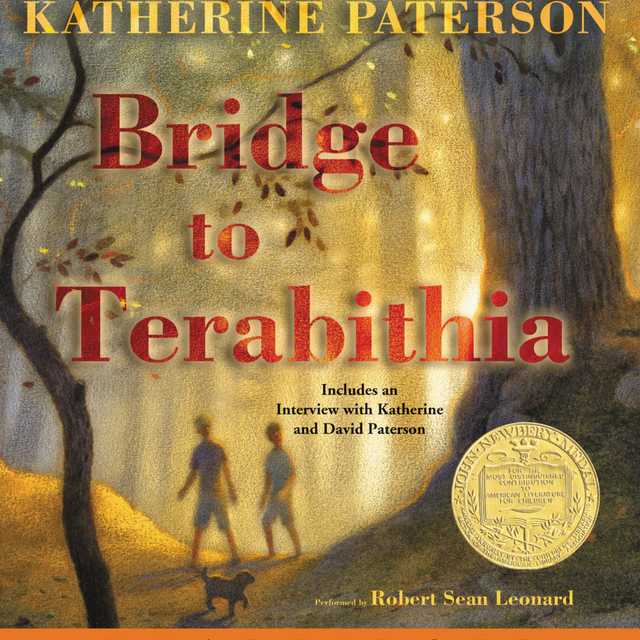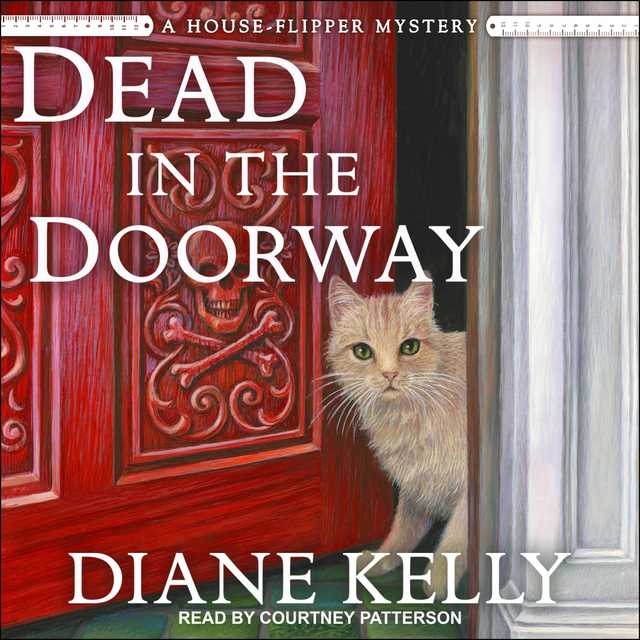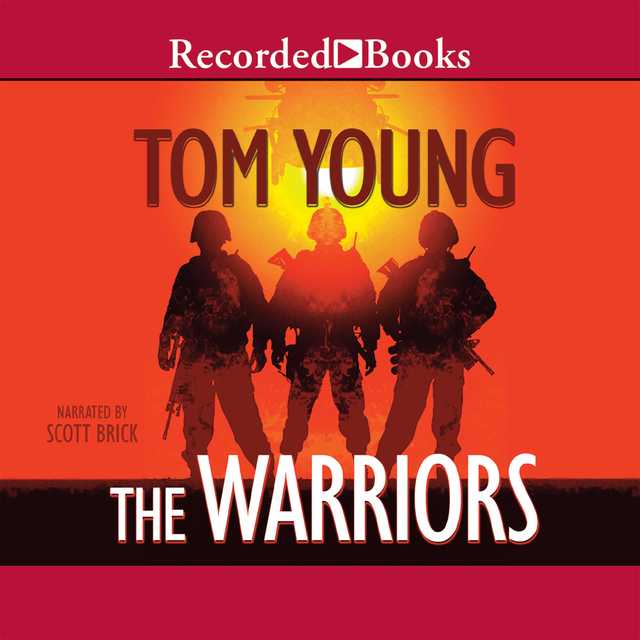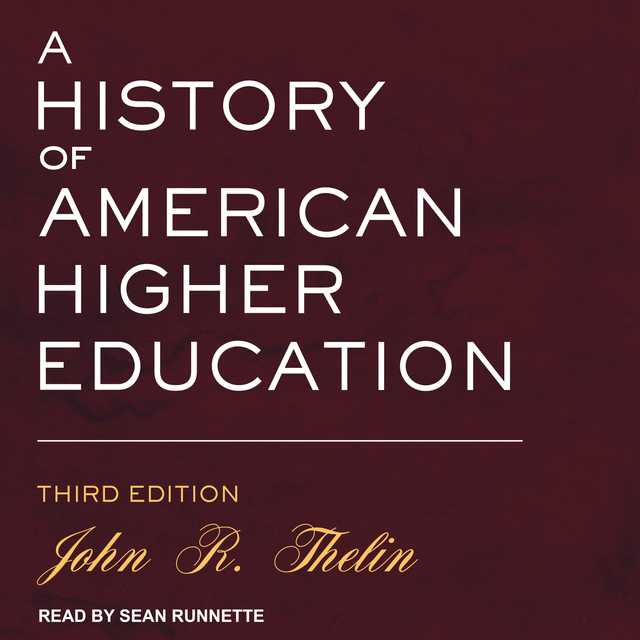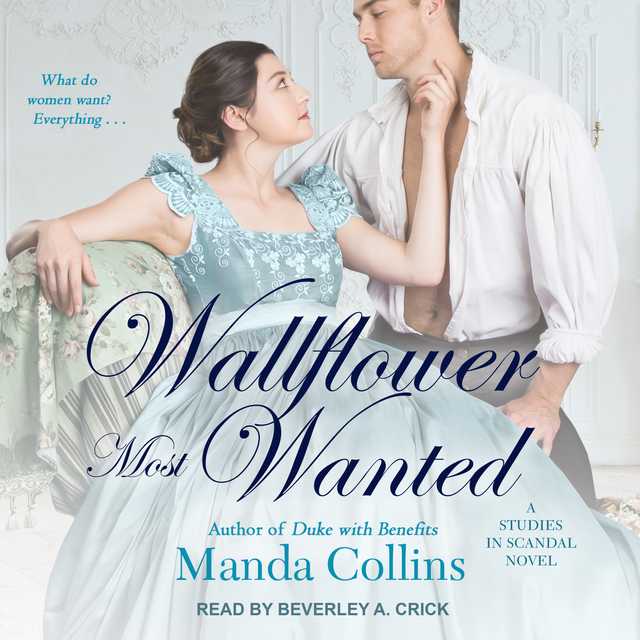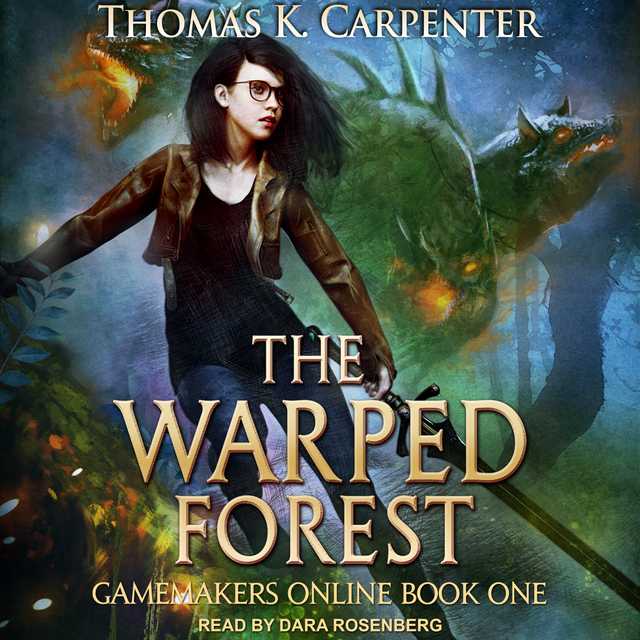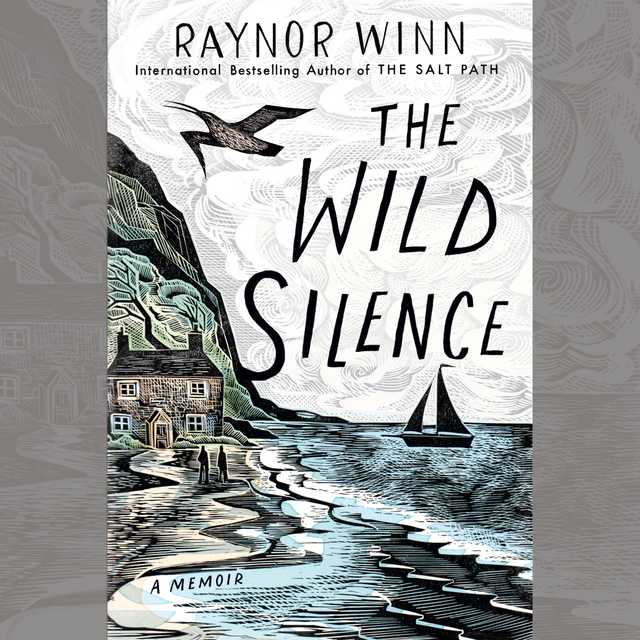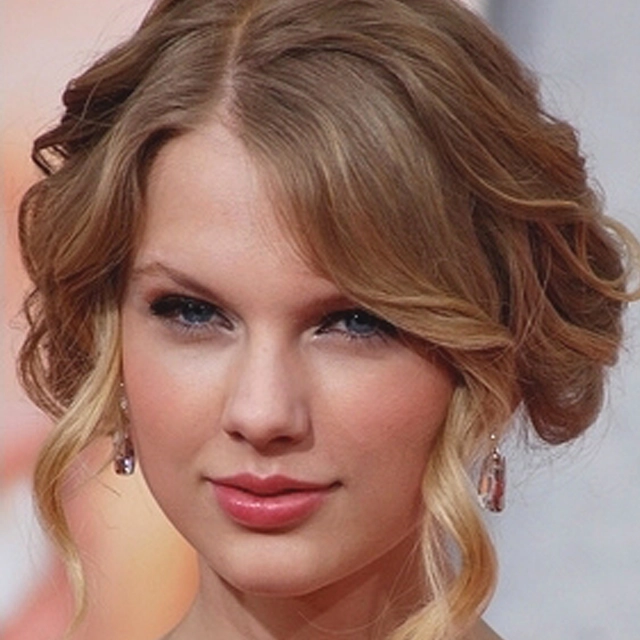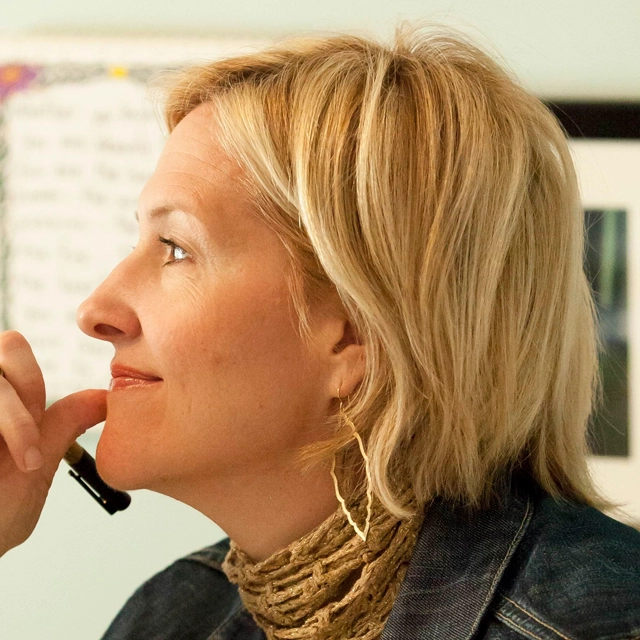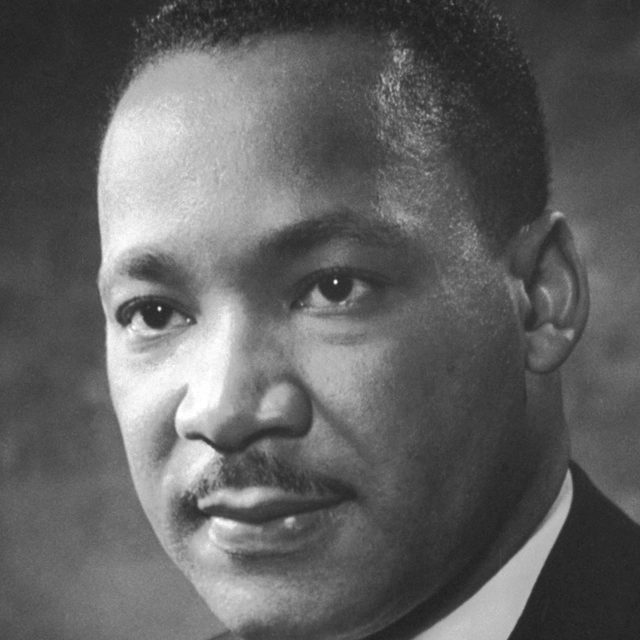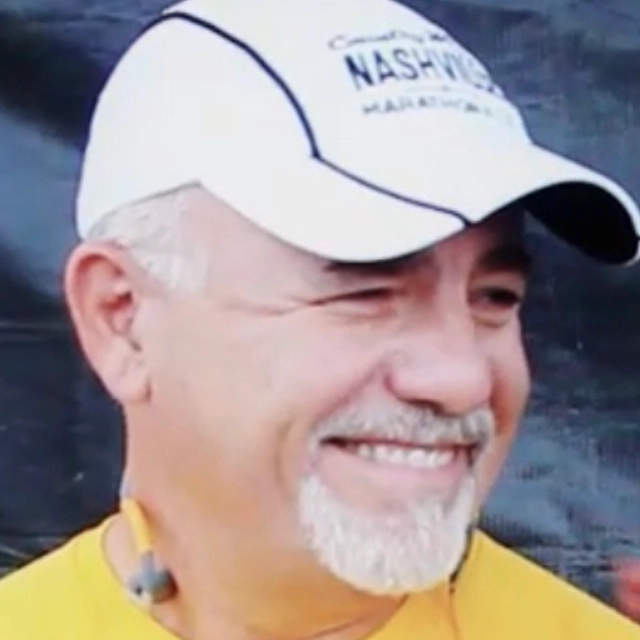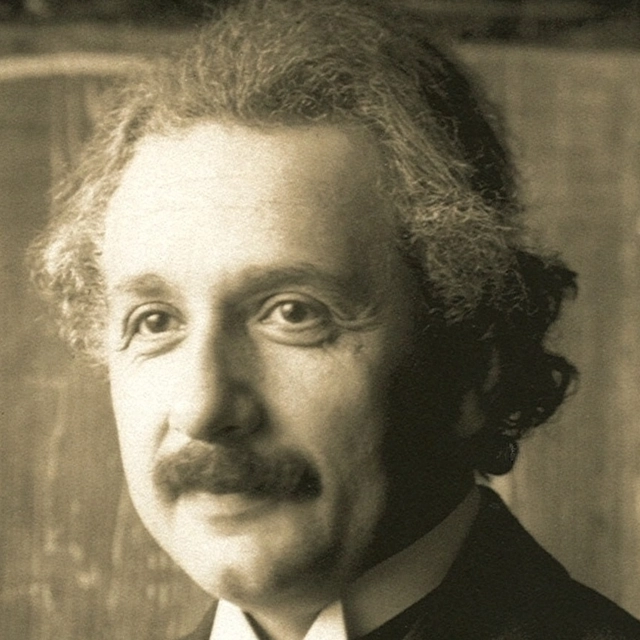Bridge to Terabithia Audiobook Summary
This beloved Newbery Medal-winning novel by bestselling author Katherine Paterson is a modern classic of friendship and loss.
Jess Aarons has been practicing all summer so he can be the fastest runner in the fifth grade. And he almost is, until the new girl in school, Leslie Burke, outpaces him. The two become fast friends and spend most days in the woods behind Leslie’s house, where they invent an enchanted land called Terabithia. One morning, Leslie goes to Terabithia without Jess and a tragedy occurs. It will take the love of his family and the strength that Leslie has given him for Jess to be able to deal with his grief.
Bridge to Terabithia was also named an ALA Notable Children’s Book and has become a touchstone of children’s literature, as have many of Katherine Paterson’s other novels, including The Great Gilly Hopkins and Jacob Have I Loved.
Other Top Audiobooks
Bridge to Terabithia Audiobook Narrator
Robert Sean Leonard is the narrator of Bridge to Terabithia audiobook that was written by Katherine Paterson
Robert Sean Leonard has starred on the New York and London stages and in such films as Dead Poets Society, Much Ado About Nothing, Swing Kids, and The Age of Innocence. He can currently be seen in the hit medical drama, House, M.D.
About the Author(s) of Bridge to Terabithia
Katherine Paterson is the author of Bridge to Terabithia
More From the Same
- Author : Katherine Paterson
- Bread and Roses, Too
- The Field of the Dogs
- Jacob Have I Loved
- Lyddie
- Birdie’s Bargain
- Publisher : HarperCollins
- Coraline
- Little House on the Prairie
- Little House in the Big Woods
- On the Banks of Plum Creek
- Farmer Boy
Bridge to Terabithia Full Details
| Narrator | Robert Sean Leonard |
| Length | 3 hours 30 minutes |
| Author | Katherine Paterson |
| Category | |
| Publisher | HarperCollins |
| Release date | August 18, 2009 |
| ISBN | 9780061126093 |
Subjects
The publisher of the Bridge to Terabithia is HarperCollins. includes the following subjects: The BISAC Subject Code is Death & Dying, Juvenile Fiction, Social Issues
Additional info
The publisher of the Bridge to Terabithia is HarperCollins. The imprint is HarperCollins. It is supplied by HarperCollins. The ISBN-13 is 9780061126093.
Global Availability
This book is only available in the United States.
Goodreads Reviews
Elaine
August 20, 2007
When I read this in fourth grade, I loved it because it was enchanting, and reminded me very much of 'secret hideouts' I made with friends at the same age. When I read it again later in life, aloud to my younger brother and sister ages 10 and 12, I was choking back tears to keep reading aloud, and they were crying. If you've never read it (or, I suppose now, seen the movie) beware, this review is a spoiler! What I have learned from this book is that our assumptions about children and what is "appropriate" for them are seriously flawed. We assume they need color, fantasy, and bling, and that they can't deal with "hard" topics like death and, oh, speaking of that, life. Kids are people too. And they do understand and can deal with hard topics in many ways better than us adults, who have learned to choke back the tears instead of actually crying. When I was a kid going to my secret hideouts, I wasn't just playing, I was escaping. If kids don't understand real life, then why do they run from it, then, as in this book (and in real life) gain life-altering skills while "away" and come back stronger? I may choke back tears now, but when I was 10, I went to my secret hideouts to cry and deal with things in my own way, in my own world, just like Leslie and Jesse do in Terabithia.
Whitney
April 12, 2017
You would think that even after seeing the movie and knowing how this ends I wouldn't cry, but here I am. This book was very enjoyable! I can't remember if I read it as a kid, but it was definitely worth reading now that I'm older.The writing is pretty and gives you a very country-vibe with vibrant imagery and cozy settings, but I felt like the characters lacked a lot of description. Maybe it’s a children’s book and i’m not used to the shorter pace, but it felt like a lot more needed to be fleshed out. The relationships between the characters. Day-to-day activities. Dialogue scenes. It all just happened very quickly and it was hard to gauge how much time was actually passing, and it felt like the characters and plot were progressing faster than they probably actually were.I really need to pick up more children’s classics because reading a book written and presumably set in the 70s was so captivating! References to the Vietnam war and the fearlessness about talking about religion and God was just something I rarely see today, and adding in details so particular to the time period almost 50 years ago now was just very cool! I couldn’t get the movie out of my head when I read this, even though I haven’t seen the movie in years. Baby josh hutcherson is so precious that I think it added a spark to the book just seeing his face in my mind. However, comparing the book to the movie was a little bit detrimental because I think I liked the movie a little more? Just because it took more time to flesh out the characters and add detail to the world of Terabithia, whereas in the book Terabithia was, ironically, rather underexplained.I loved how it described Jess as having a nervous gut. There were references to Jess having anxiety in this and i’m glad it wasn’t portrayed as something like HE NEEDS TO MAN UP! HE’S AFRAID OF SWIMMING AND HIS DAD PUTS A LOT OF PRESSURE ON HIM TO BE PERFECT, HE SHOULD BE THE MAN OF THE FAMILY! Instead it’s approached as if fear and shyness is natural and you need to work through it organically, and I thought that was really beautiful and encouraging.
Elizabeth
September 24, 2018
** spoiler alert ** Oh I loved this book too! Its so sweet, and sad and wonderful. I cried. My teacher read it out loud in my 5th grade class and when the character died, I turned to the little boy next to me , and said, "That's not true is it?" and he looked at me with tears in his eyes and nodded. It was probably one of the first mature interactions I ever had with an "icky" boy.
thefourthvine
June 04, 2007
This is one of the books that taught me that Books Can Hurt. It was part of what I now consider to be my fourth grade teacher's reign of terror - she read Where the Red Fern Grows and Bridge to Terabithia out loud to us (and those are just the books I was in her class for), and I seriously think she did it for the days when, inevitably, the entire class would spend the afternoon weeping at our desks.That said, though - and it needed to be said - this is a good book; it was so engaging to me at that age that I got it from the library after the first day she read it to us and finished it by myself later that night. (Admittedly, this was not uncommon behavior for me. I did not like reading at other people's paces.) Of course, this meant I got to cry twice, and also spend the intervening time trying not to cry because I knew what was coming. The characters are engaging. The story is memorable even 25 years later. But this is the book that taught me two important lessons: do not trust Katherine Paterson as far as you can see her, and do not trust fourth grade teachers, either.
Alejandro
April 18, 2014
This is absolutely a great book. I loved to read it!I don't know if you ever watch the film from 2007, if you do, but you haven't read the book, I can tell you that the movie is a good adaptation BUT it can mislead you in the "fantasy" factor, even I used that label in my review but only because, at this moment, I don't have a better label to describe the book in a fair way.I tell you all that since in the film, they gave a lot of emphasis and screen time to all "those magic creatures", however, they don't exist, in the book, the kids are really clear on that, they are playing sure, but they don't start to watch magic creatures from the thin air, they just using something called "imagination".I tell you that too, just to make you understand that if you want to read this book expecting something in the style of Harry Potter or Narnia, you will get a real disappointment, BUT if you are looking to read an amazing, coming-to-age story, you will read one of the best books in that area, genre and/or topic.Due to clumsy reasons, this great book has been banned in many libraries. What I can tell you is that the kids here talk and think in a very real and honest way, so I don't think that can be a good reason to ban this book.This is a truly great novel about growing, about maturing, about the impossibility of controlling life and that you have to treasure each moment that you are living since you never know when something will change forever.Also, you won't understand the reason for the title of this book until you read it, but please, don't do any research or investigation, since the impact of the story depends of that you don't know anything ahead.This is a short book, just read it and it will live in your heart forever.
Steven
August 10, 2018
I don't see how a middle grade book can do this to somebody.
Kirk
March 06, 2016
There are only two books that have made me cry. Granted, I was in sixth grade when I read this for the first time. But like most books I review on Goodreads, I sat down to read this again before posting my review. My sentiments about Bridge to Terabithia haven't changed much.I don't remember a lot from my pre-teen years. Little fragments crop up from time to time when I see an old commercial on Youtube or I play an 8-bit classic on my Wii. This book I remember. And as I re-read it I started recalling the circumstances that surrounded my initial reading of this book. I remember the girl I had a crush on who sat behind me in class. I remember growing my hair out and listening to Iron Maiden, experimenting with image, stripping away those last external indicators of child-like innocence and trying to be more "grown up." Then I remember crying in my closet near the end of this book. Years later I have a career, a daughter, a wife. I still listen to Iron Maiden, but I don't wear the oversized metal shirts like I used to, and my hair is cut short most of the time. I don't have to try to be an adult anymore. What I was pushing back then I reflect on as an inevitable development now. Now I find myself retracing my steps, trying to go back to that time in my life, but like Rita Dove observes in her poem "Driving Through," it isn't always as easy or clear cut as we hope it to be. I'm a different person now, at least that's what I told myself when I started reading this book again a few years ago. How strange that sometimes drawing a connection between the person we were and the person we become happens inadvertently, at the most unexpected moments, when we spend half of our lives trying so hard to move forward and half of lives trying so hard to go back. So there I sat, more than a decade later, with the same emotional reaction I had as a child telling me to stop reading, and nostalgia and the comforting memory of childhood ebbing me back towards youth.
Jon
March 30, 2008
** spoiler alert ** Bridge to Terabithia is a staple of many middle school literary curriculums; however, it is one of the most challenged books in school systems across the country. Opponents of this book preposterously assert that it has references to witchcraft and Satanism. I read this book in 5th grade and gathered no references to the use of magic at all. The book involves two children having imaginary adventures in the imaginary land of Terabithia. Such imaginary games are common for children. Yet some assert that Katherine Patterson’s writing about such common activities is a reference to witchcraft. The book is an amazing piece of children’s literature and one of the only pieces from fifth and sixth grade a number of my peers remember reading. It stood out to us. We remembered it and used it to become better writers and thinkers. It helped us transition to more complex books. Educators and teachers should advocate strongly for this book to be read in class. Patterson instills into this book many important thematic elements of a great story in a manner that younger students will be able to identify with some thought on the book. Foreshadowing, character development, symbolism, and a clear connected thread and purpose are present throughout the whole story as Jess makes friends with the new girl Leslie, learns important lessons from her that help him to become more confident, and then is forced to say goodbye when she dies entering their imaginary land of Terabithia. To an older reader, the foreshadowing of Leslie’s death is a little heavy-handed, but in no way poorly presented to a younger audience. “Sometimes it seemed to him that his life was as delicate as a dandelion. One little puff from any direction and it was blown to bits” (Paterson, 99). When May Belle becomes horrified of Leslie’s independent thoughts on the authenticity of the Bible, she exclaims, “What’s going to happen if you die?” (Paterson 109). Paterson makes the readers contemplate Leslie’s death briefly and insincerely several times before forcing them to do it for real. When she dies, they must revisit those thoughts they’d only touched on. “The Perkins place was one of those ratty old country houses you moved into because you had no decent place to go and moved out as quickly as you could” (Paterson 10). If the reader takes this passage seriously, they must know that the Burkes will leave Jess, in one way or another. After Leslie’s death the Burkes do leave. “No one ever stayed in the old Perkins place” (Paterson 161). As a result of this heavy foreshadowing, the books overall tone adopts one of reflection, as opposed to simple telling, a story that had to be told, that demanded to be told. Patterson’s accomplishment here is powerful to a child’s appreciation of literature and their ability to deceiver more complex literature later. Another interesting literary event that young readers can benefit from analyzing is Jess’s evolution as a person, especially with regard to Terabithia’s changes. It was Leslie who had taken him from the cow pasture into Terabithia and turned him into a king. He had thought that was it. Wasn’t king the best you could be? Now it occurred to him that perhaps Terabithia was like a castle where you came to be knighted. After you stayed for a while and grew strong you had to move on. For hadn’t Leslie, even in Terabithia, tried to push back the walls of his mind and make him see beyond to the shining world-huge and terrible and beautiful and very fragile?...Now it was time for him to move out (Paterson 160). Jess is simply not the same person he was at the beginning of the book and what logically follows is that Terabithia is not the same place to him that it was. Concurrently, he must move out. A heavy handed indication of Jess’s transition occurs with his father near the entrance to Terabithia. His father begins, “‘Hell ain’t it?’ It was the kind of thing Jess could hear his father saying to another man. He found it strangely comforting, and it made him bold.” (Paterson 148). In the beginning, Jess’ father would barely speak a word to him. Jess relationship with his father has changed as well. On the same note, children can benefit from seeing the method for entering Terabithia changing with Jess and with Terabithia’s significance to Jess. In the beginning, entering Terabithia involves a scary trip swinging across a river on a rope. In the end, Jess builds a bridge to Terabithia, changing one of its key characteristics and symbolizing the increased ease Jess has with accessing what he learned from Terabithia. In the end, Jess seeks to open Terabithia’s lessons to his younger sister, Joyce Ann. “And when he finished, he put flowers in [Joyce Ann’s] hair and led her across the bridge-the great bridge into Terabithia-which might look to someone with no magic in them like a few planks across a nearly dry gully…” Jess leads Joyce Ann into this kingdom of learning and evolution, a confident adolescent, just as the confident Leslie had done for him once. He has learned from Leslie, about himself and his insecurities, and about life, and can share these lessons with Joyce Ann. Also valuable as classroom discussion is what parallels, if any, Leslie has with Jesus. Certainly a Christ archetype is present in many works and discussion of such can benefit students. As with so many literary elements, it is hard to say whether the author intended this parallel, but that idea is unimportant except to express it to the students. Leslie makes ambiguous comments at the beginning of the book about how she likes and dislikes the country. Jess is talking to her about her old home. “I really miss it.” She replies. “You must hate it here” (Patterson 41) he says. She says she does. “I wanted to come too” (Paterson 42) she says, talking of her parents’ decision to move. Her contradicting sentiments parallel Jesus’ experience in the garden of Gethsemane, where he asks god to save him from his impending crucifixion, but exclaims truly that he is glad to do it if it is God’s will. One could argue that her playing with the boys and running faster than them is analogous to Jesus’ miracles. Her challenging people’s interpretations of the Bible is another possible parallel. Also, Jess describes her arrival as “probably the biggest thing in his life” (Paterson 10). She dies as a result of coming, as a result of ultimately helping Jess transition from an insecure introspective adolescent into a more confident man. This is a weaker thematic element, and perhaps Paterson did not intend it, but its presence is something that may be discussed briefly in the classroom. Someone unfamiliar with this book may think that these elements are too complex for younger readers; however, Paterson presents them expertly to a younger audience while engaging the students with a character they can relate to, Jess. He is constantly introspective, thinking not only about an issue, but on his thoughts on the issue too. He frequently wonders why he is thinking that way, leading him deeper and deeper into his mind. He has feelings for Ms. Edmund that he does not yet understand as well. The beginning of the book is hard focused on portraying Jess as having external suffering as well “Ever since he’d been in first grade he’d been that “ ‘crazy little kid that draws all the time’” (Paterson 4). The number of sentences used to portray this manner of suffering almost rivals his introspective lamentations, and establishes a character that many confused early adolescents can not help but identify with and cheer on. If this element commands girls’ attentions less, then Leslie’s charisma is more than enough to bridge the gap. The use of swear words helps to prevent children from resenting the book and closing their minds to it simply because children at that age are told not to swear. This book swears? Wow, that must be cool. I want to read on. And they do. And more importantly, they listen to what they are reading. Bridge to Terabithia is not a book of separate literary elements, but rather elements that play beautifully and deftly together to create a complete literary work, one to help children transition to more complex literature and to make them think of new ideas. It should be staple of every early middle school English education regardless of objections that may be voiced against it. If this book is not on your child’s curriculum, it is worth your time to ask why and challenge such a decision. Afterwards, you and your child should read it together. You’ll both enjoy it.
Cartas de un Lector
January 01, 2022
Si no lloras con este libro, genuinamente pensaré que no tienes sentimientos. Es inevitable no sentirte conmovido por la historia, que aunque tiene un desarrollo muy rápido, se saborea por completo al tener personajes muy bien construidos.Todo pasa tan rápido y al mismo tiempo lo ves en cámara lenta. Lee este libro si buscas algo ligero. Genial para quitarte un bloqueo lector 🤩
Ahmad
August 10, 2019
Bridge to Terabithia, Katherine PatersonBridge to Terabithia is a work of children's literature about two lonely children who create a magical forest kingdom in their imaginations. It was written by Katherine Paterson and was published in 1977 by Thomas Crowell. In 1978, it won the Newbery Medal. Paterson drew inspiration for the novel from a real event that occurred in August 1974 when her son's friend was struck dead by lightning.In the novel, Paterson illustrates the life of an artistic young boy named Jess Aarons and the burdens and hardships of his home life, such as his duties on his family's farm and the constant agitations and annoyances of his four sisters. He has straw-colored hair and long legs. Leslie Burke is an intelligent, wealthy girl who has just moved into "the old Perkins place" down the road from him. He is initially cold toward her. After having trained all summer to become his class's fastest runner, he is infuriated when she outruns him in a recess footrace. After further negative experiences with classroom tormentors or rivals, including Gary Fulcher, Jess eagerly anticipates the arrival of music class due to his infatuation for its beautiful young teacher, Miss Edmunds. However, on the day it begins, he discovers a fondness for Leslie, eccentric and ostracized, and they develop a friendship. He marvels at the way she genuinely likes to read and write, not just to impress their teacher, and the way she makes running look beautiful and effortless (not that he would ever actually say anything of the sort). On a sunny day, Jess and Leslie use a rope to swing over a creek, and they decide to design an imaginary sanctuary from the burdens and pains of everyday life. They reign as monarchs, calling their domain Terabithia and constructing a small refuge in which their imaginary escapades take place. At school, Jess and Leslie are challenged by an older bully named Janice Avery, whom they immensely detest. After she steals a package of Twinkies from Jess' younger sister May Belle's lunch, they forge a romantic letter under the disguise of Willard Hughes, the object of Janice's infatuation, setting her up for misunderstanding. The plan is successful, exposing her to public mortification. Later, Leslie encounters her sobbing in the girls' bathroom. ...تاریخ نخستین خوانش: روز یازدهم ماه آگوست سال 2006 میلادیعنوان: پلی بهسوی ترابیتیا (برنده مدال نیوبری از امریکا؛ در سال 1978 میلادی)؛ نویسنده: کاترین پاترسون؛ تصویرگر: دونا دیاموند؛ مترجم: نسرین وکیلی (وکیل)؛ تهران: دستان، 1383؛ در 184 ص، مصور؛ شابک: ایکس - 964764230؛ موضوع: داستانهای نوجوانان از نویسندگان امریکایی - سده 20 معنوان: پلی به سوی ترابیتیا؛ نویسنده: کاترین پاترسون؛ تصویرگر: دونا دیاموند؛ مترجم: سحر بشارتیراد؛ تهران: آسو، 1397؛ در 188 ص؛ شابک: 9786008755425؛تنها پسر یک خانواده پرشمار «جس»، همیشه تنهاست. بزرگترین آرزویش، برنده شدن در مسابقه ی دویدن، بین کلاس پنجمیهاست. همه ی تابستان دلمشغول تمرینات دو بوده، و برای شکست دادن همکلاسیهایش لحظه شماری میکند. در نخستین روز مدرسه، دختری به نام «لزلی»، که شاگردی تازه است، با جسارت وارد زمین بازی پسرها شده، از همه جلو میزند. با اینحال بین «جس» و «لزلی»، دوستی ناگسستنی برقرار میشود. آن دو با هم «ترابیتیا» را میآفرینند؛ سرزمینی جادویی در جنگل، سرزمینی که هر دو، به عنوان پادشاه و ملکه، در آن حکمرانی میکنند. یکروز در غیاب «جس» رخدادی ترسناک برای «لزلی» رخ میدهد. «جس» در برابر از دست دادن دوستش «لزلی»، واکنشی قهرمانانه و شگفت انگیز ندارد. سوگواری را تاب میآورد، و سختیها را پشت سر میگذارد. در پایان «جس» با این تراژدی کنار میآید، و سرانجام میتواند، پلی به سوی «ترابیتیا» بزند، و خواهر کوچکش را، به عنوان فردی تازه، در فرمانروایی آن سرزمین، شریک میکند. به این ترتیب است که «جس» درمییابد، «لزلی» چه تاثیر شگرفی، در او ایجاد کرده، و چه توانایی و شجاعتی، به او بخشیده است. نویسنده در این داستان، از فاصله ی نوجوانان با دیگر اعضای خانواده، از نقش ورزش و هنر برای جبران تنهایی، از دوستی، و از معجزه ی خیال، برای پاسخگویی به نیاز نوجوانان، میگویند، و به خوانشگر نوجوان خود، شجاعت و توان میبخشد. این کتاب جوایز بسیاری از جمله: مدال نیوبری سال 1978 میلادی را، از آن خود کرده، و ترجمه ی فارسی کتاب نیز، از سوی شورای کتاب کودک، در سال 1384 هجری خورشیدی، به عنوان اثر ویژه، برگزیده شده است. ا. شربیانی
Marnie
February 10, 2020
”You never know ahead of time what something’s really going to be like”(Cropped from the paperback cover illustration: Puffin Books, 2015)Yes, I cried so much I couldn’t properly see to finish the last chapter. I clearly remember watching the movie back in 2007, the rich imagined world and that adventure Leslie and Jess created for themselves. But for the life of me I could not remember how it all ended. So I grabbed the book of my shelf and decided to find out.Now I know that I mentally blocked-out the end; because just thinking of Jess’ reaction makes tears well-up in my eyes.I love how this book show the readers just how to use their imaginations - How to build your own world and live your own adventure. Even as an adult I’m tempted kick reality out and go live in my own world. I like that Katherine starts of this book kind of slow and boring and then picks up the pace and voyage as the fantasy world grow.The end just striped me raw. The way Jess’ feelings are expressed and how he deals just ripped out my heart.
Jim
February 12, 2017
While I've seen this book on various lists for years, I never got around to reading it & had no clue what it was about. I was in the Army when it was published. I know one or two of my kids read it, but it was one of the rare books that I didn't at least skim. (I think my wife read it, instead.) When I first started listening to it this morning, I didn't really get into it at first. It's well written, but wasn't really my thing. Still, it was short & I've been meaning to get around to it, so I kept on. I'm so glad I did.It didn't really grab me until the last quarter & then it wouldn't let go. The end was incredible & really hit me right where I live. (If you don't know how the book ends, don't read this spoiler.) (view spoiler)[When I was 10 & in fifth grade, my father died. Paterson had a great model since her son had lost his best friend, a girl much like Leslie, when he was about the same age. She was struck by lightening. (hide spoiler)] Her characterization was wonderful & the ending is haunting.My edition had an interview with Paterson & her son, David, who apparently illustrated some editions & had dealt with making this into a movie. It was well worth listening to. Paterson said The Yearling was one of her inspirations which isn't surprising.Apparently this book is hotly debated & often banned by schools because, like the The Yearling, it deals with death. Some parents don't think their kids should even read about it; a damn fool idea, IMO. As David, I, & many others found out early, it happens. While there is no preparation for it, knowing that others have survived it does help, even fictional people. David also mentions in the interview that at the end of the first screening of the movie, the kids came out happy with the ending while it was the adults that only thought of the sad part. That's part of being a kid, I think. I sure thought the very end was happy, too.Anyway, I'm sorry it took me so long to get around to reading this & I highly recommend it for all ages.
Jessica
February 19, 2020
A lovely book that has stood the test of time.2020: Read this aloud to the kids as it's on the Battle of the Books list this year for my daughter. I had forgotten how much is covered in such a slim book, yet how fast it goes. Also the casual cruelty of both Jess's family and bullies at school, not to mention how Leslie and Jess retaliate. Interesting.
Denise
April 23, 2008
Lines I loved:Lark Creek was the backwash of fashion. It took them a long time to accept there what everyone could see by their TV’s was OK anywhere else.It made Jess ache inside to watch his dad grab the little ones to his shoulder, or lean down and hug them. It seemed to him that he had been thought too big for that since the day he was born.It was the beginning of a new season in his life, and he chose deliberately to make it so.Gary Fulcher could go to you-know-where and warm his toes.Even a prince may be a fool.All the way home in the sunshine Miss Edmunds told funny stories about going to college one year in Japan, where all the boys had been shorter than she, and she hadn’t known how to use the toilets.They weren’t crying for Leslie. They were crying for themselves. Just themselves.Jess knew; but still, but still, at the bus stop he looked up, half expecting to see her running up across the field.He could hear the sounds of the whispers but not the words. Not that he wanted to hear the words.It was up to him to pay back to the world in beauty and caring what Leslie had loaned him in vision and strength.
jv
May 29, 2015
I remember reading this when I was very young (thanks, Julie!). I couldn't remember particulars of the story, but the impact of the book never left me.Currently in a re-reading phase, I was curious to see how I would feel about the book now.....more than 30 years after it was first published. To say that "it has stood the test of time" would be a disservice. And the impact? To borrow from @ericsmithrocks: "ugly crying". Knowledge, in this case, was not power. It still felt like a punch-to-the-gut-from-out-of-nowhere. Sadness seeped into my soul and I sobbed.Well done, Ms. Paterson. Well. Done.
Most Popular Audiobooks
Frequently asked questions
Listening to audiobooks not only easy, it is also very convenient. You can listen to audiobooks on almost every device. From your laptop to your smart phone or even a smart speaker like Apple HomePod or even Alexa. Here’s how you can get started listening to audiobooks.
- 1. Download your favorite audiobook app such as Speechify.
- 2. Sign up for an account.
- 3. Browse the library for the best audiobooks and select the first one for free
- 4. Download the audiobook file to your device
- 5. Open the Speechify audiobook app and select the audiobook you want to listen to.
- 6. Adjust the playback speed and other settings to your preference.
- 7. Press play and enjoy!
While you can listen to the bestsellers on almost any device, and preferences may vary, generally smart phones are offer the most convenience factor. You could be working out, grocery shopping, or even watching your dog in the dog park on a Saturday morning.
However, most audiobook apps work across multiple devices so you can pick up that riveting new Stephen King book you started at the dog park, back on your laptop when you get back home.
Speechify is one of the best apps for audiobooks. The pricing structure is the most competitive in the market and the app is easy to use. It features the best sellers and award winning authors. Listen to your favorite books or discover new ones and listen to real voice actors read to you. Getting started is easy, the first book is free.
Research showcasing the brain health benefits of reading on a regular basis is wide-ranging and undeniable. However, research comparing the benefits of reading vs listening is much more sparse. According to professor of psychology and author Dr. Kristen Willeumier, though, there is good reason to believe that the reading experience provided by audiobooks offers many of the same brain benefits as reading a physical book.
Audiobooks are recordings of books that are read aloud by a professional voice actor. The recordings are typically available for purchase and download in digital formats such as MP3, WMA, or AAC. They can also be streamed from online services like Speechify, Audible, AppleBooks, or Spotify.
You simply download the app onto your smart phone, create your account, and in Speechify, you can choose your first book, from our vast library of best-sellers and classics, to read for free.
Audiobooks, like real books can add up over time. Here’s where you can listen to audiobooks for free. Speechify let’s you read your first best seller for free. Apart from that, we have a vast selection of free audiobooks that you can enjoy. Get the same rich experience no matter if the book was free or not.
It depends. Yes, there are free audiobooks and paid audiobooks. Speechify offers a blend of both!
It varies. The easiest way depends on a few things. The app and service you use, which device, and platform. Speechify is the easiest way to listen to audiobooks. Downloading the app is quick. It is not a large app and does not eat up space on your iPhone or Android device.
Listening to audiobooks on your smart phone, with Speechify, is the easiest way to listen to audiobooks.

